Although developed for Navy SEALs by a former Navy SEAL, you don’t have to be an extreme athlete to try TRX. As a matter of fact, suspension straps are suitable for all fitness levels and appropriate for beginners as well as professional athletes. TRX has made it easier than ever for all levels of fitness to get involved and try it out. Sounds like a fun way to get a total-body cardio and strength workout, right? Keep reading our Beginner’s Guide to TRX to get the complete low down on everything suspension training.
Use the links below to quickly navigate this guide:
- What Is TRX?
- Benefits Of TRX
- How Do I Get Started With TRX?
- How Do I Purchase A TRX Suspension System?
- 5 Best Suspension Systems
- Basic Suspension Trainer TRX Workout
What Is TRX?
TRX is a suspension training system developed for Navy SEALs consisting of two thick straps that hang down and allow you to strength train using your own body weight. How does it work? The straps have loop holes for your feet or your hands and, depending on the exercise, you create movements that get you to fight gravity and develop strength, balance, flexibility, movement and stability.
Benefits Of TRX
A Balanced Body
The TRX suspension trainer goes far beyond traditional strength training benefits. This type of training is also great at implementing stability, balance, and flexibility into your workouts. A healthy, fit body should display all of these things. You might see gym-goers who have vast amounts of strength but are lacking in stability, balance and flexibility. TRX allows you to incorporate all of these things at once.
Core Training
Another great benefit to the TRX suspension training is the amazing core strength benefits achieved! Core strength has become trendy, but the importance of a strong core cannot be underestimated! This is a system designed to make you use your core for every single move!
Functional Training
In addition, traditional training usually works on one muscle at a time in a linear fashion (think bicep curl or bench press), which limits your ability to train and move. TRX suspension training allows you to move your body in more functional ways using a wider variety of positions which work on multiple planes of movement. This means you utilize more muscles and joints working together, just like you do in real life.
For all these reasons you should incorporate suspension training into your workout routine because you can improve your quality of life by improving your movement patterns. With proper stability, strength, and balance, you build a stronger core, lessen your risk of injury, and learn proper form to optimize your exercise results.
Related: Why TRX Is A Good Workout
How Do I Get Started With TRX?
There are a few different ways to learn the ins and outs of TRX training for yourself.
Try a Trainer
The suspension trainer is great for a fast and effective workout for all fitness levels. Start slowly and build up to more intense exercises along the way. If you have never tried the TRX, seek out help from a trainer for your first time. You won’t need him or her for each workout, but to get proper exercise techniques and ideas for basic exercises, a session with a trainer will go far. Alternatively, there are many online resources to show you the right form and give you ideas. The key is to educate yourself and read in advance so your time in the gym or at home with the straps is effective.
Check Out A Class
Most health clubs and gyms offer classes or group sessions using the TRX. If you don’t see it on a schedule, make sure you ask. You can also check with your local community education program or college for the possibility of classes or trainings. This is another, less expensive way to learn the ins and outs of using the TRX system.
How Do I Purchase a TRX Suspension System?
If you are ready to dive into the world of TRX-like training, you might be perfectly happy seeking it out at your local gym and making use of it there. If you’re more inclined to train at home and want to purchase your own, here’s a guide that might help you choose the right one.
Like many things you purchase, suspension trainers can look very similar. After all, aren’t they just straps with loops? However, also like many things you purchase there are differences when you start to look more closely. So what’s right for you? Here are some things to consider.
Quality of the Straps
Let’s cut to the chase, your body is being supported by two straps. You want the highest quality material for these straps in order to keep you safe and hold your body weight. Look for commercial grade webbing and buckles made from carbon fiber. Check the packaging and compare your body weight with what these straps are able to hold.
The Handles
Since you’ll be doing all your exercises by using the handles, it is imperative that the system you choose has handles that are not only comfortable for you to hold, but also slip resistant and properly shaped.
Support System
Most high quality straps come with a DVD and/or booklet that helps you set up and use your straps right away.
Price
Of course the price is going to help you determine whether or not the system you choose is right for you. It needs to be affordable. The cost for a suspension system can vary widely, anywhere from $30 to $250! Use the criteria we’ve provided here when you decide
5 Best Suspension Systems
Here are 5 suspension systems we recommend you check out.
1. TRX
COST: $160
TRX is the brand people think of when it comes to suspension system, kind of like Jello is to gelatin. It’s the original and the gold standard. TRX will be a reliable choice, though not inexpensive. It will give you everything you need, including two different anchoring solutions, soft comfy handles and foot supports, and a video for “how-to.”
2. GoFit Gravity Straps
COST: $35 – $50
Less expensive than most of the choices, the GoFit straps are not as wide and sturdy as the TRX, but the low cost might make it worthwhile. They still claim to hold up to 300 pounds of bodyweight, not much less than their counterparts at 350 pounds.
3. NOSSK Home Suspension Fitness Trainer
COST: $25
The NOSSK has 1st grade U.S. military webbing specifically designed for indoor use. It also comes with high quality straps and handles with a foot loop, a built-in door anchor, as well as two full length exercise posters.
4. CoreX Suspended Trainer
COST: $150-$200
CoreX has handles that are ergonomically designed to contour the palm and finishes with a classic old school milk bottle grip. The handle ends are tapered to reduce rolling resistance against nylon webbing. CoreX can do it all and is great for yoga poses too.
Setting Up Your Suspension Trainer
So once you have your suspension system purchased, you need to know how to use it, right? The following tips are for the TRX system, but will work for most others as well.
You want the anchor point to be approximately 7-9 feet off the ground. Then, by adjusting the length of the handles and the angle of your body you can make most exercises easier or harder. Try to find an area about 6-8 feet wide with a non-slip surface to get started.
Adjusting Different Lengths For TRX Straps
Mid-Length (ML) – The yellow tabs should be lined up against the two small yellow lines found in the middle of the strap.
Fully Lengthened (FL) – The yellow tabs should be fully extended towards the bottom of the straps.
Mid-Calf (MC) – The handles should reach about mid-calf height or slightly above dependent upon your preference.
Shortened (S) – The yellow tabs should be completely shortened in which they are brought up towards the anchor point.
How To Get Into The Straps
Supination (think on your back)- While seated on the ground, place your index fingers in the foot cradles. Roll back on your tailbone and place your heels in the foot cradles with toes pointing up. Apply some pressure into your heels to make sure your foot stays secure.
Pronation (think plank position) – While seated on the ground, place your index fingers in the foot cradles. Place opposite foot through opposite cradle (right foot goes through left cradle, vice-versa). Whichever leg is on top, flip towards that direction. If done correctly, you should be in plank position and your straps non-crossed.
How To Progress and Regress On A TRX Trainer
Progression
One of the easiest ways to increase intensity on a suspension trainer is to decrease the angle at which you perform your exercise. This simply means moving your feet closer towards the anchor point when performing a standing exercise. To increase intensity in a lying pronation or supination position, you bring yourself further away from the anchor point. In this placement, gravity is going against you and thus making the movement harder. Other ways to increase intensity include adding other pieces of equipment such as a Bosu or a kettlebell or performing unilateral exercises such as a single-leg squat or single-arm row.
Regression
If you are struggling with form or becoming fatigued, you may want to consider regressing on your suspension trainer. You can do this by creating a wider angle at which you perform your exercise. This simply means moving your feet further from the anchor point when performing a standing exercise. To decrease intensity in a lying pronation or supination position, bring your feet in neutral alignment with the anchor point or past neutral. In this placement, gravity is working with you and thus making the movement less resistant. Other ways to decrease intensity include widening your stance for better support, creating a kickstand with your feet or lying performing pronation exercises on your knees.
Basic Suspension Trainer TRX Workout
Do 8-10 reps of each exercise (each side for unilateral exercises) for 1-3 sets depending upon your fitness level. Take 30 seconds of rest between each exercise and gradually decrease rest by 5-10 seconds each week until you’ve reached no rest between exercises.
Pistol Progression Squat (ML)
A) Start with your feet shoulder-width apart. Place your palms in the handle so they are facing each other and stand back so your arms are extended but you’re not leaning back against the straps. Place your left foot 5 inches in front of you and lift your left heel.
B) Displace your weight in your right foot, sit your hips back and squat down towards the ground. Keeping your back flat, squeeze your glutes and return to standing.
Alternating Side Lunge (ML)
A) Start with your feet shoulder-width apart. Place your palms in the handle so they are facing each other and stand back so your arms are extended but you’re not leaning back against the straps.
B) While hinging your hips back, step laterally with your left foot until your left knee reaches 90 degrees. Keeping your back flat, squeeze your glutes and return to standing.
Straight-Legged Hip Hinge (ML)
A) Place your body underneath the anchor point of your strap. Place your palms on top of the handles so they are each facing down. Apply light press on the handles to engage the core.
B) Hinge your hips forward, squeeze your glutes and extend your left foot directly behind you until your leg is almost parallel to the ground. You should feel a nice stretch in your hamstring. Return to starting position.
Chest Press (FL)
A) Start with your body facing away from the anchor point. Place your palms facing down in the handles. Extend your arms in front of you to shoulder height. Engage your core and squeeze your glutes to maintain a plank position.
B) With control, bend your elbows until the reach 90 degrees. Return to starting position.
Triceps Extension (MC)
A) Start with your body facing away from the anchor point. Place your palms facing down in the handles. Place your handles so that are leveled with the crown of your head and elbows are pointed forward.
B) While engaging your core and squeezing your glutes, extend your arms while squeezing your triceps. With control return to starting position
Biceps Curl (ML)
A) Start with your feet shoulder-width apart. Place your palms in the handle so they are facing upwards and stand back so your arms are extended. Curl your handles towards the crown of your head and keep your elbows pointed forward.
B) While engaging your core and squeezing your glutes, extend your arms. Squeezing your biceps, curl your handles towards the crown of your head, back to starting position.
Rear Dealt T-Extensions (ML)
A) Start with your feet shoulder-width apart. Place your palms in the handle so they are facing inward. Extend the handles out so your arms are forming a “T.”
B) While engaging your core and squeezing your glutes, bring your arms to center. Bringing your shoulders down and back, squeeze your upper back muscles to bring your arms out in to a “T.”
Hamstring Curls to Bridge (MC)
A) Start lying underneath the suspension strap. Place your heels into the strap with toes pointed upwards.
B) Squeeze your thighs together, lift your hips up and bring your knees towards your chest.
Plank to Ab Tuck (MC)
A) Place your feet through the handles and lay in plank position. Align your palms so they are underneath the shoulders. Engaging your core, come in to plank position with your feet flexed, heels pushed up against the handles.
B) Squeeze your thighs together, draw your knees towards your chest.
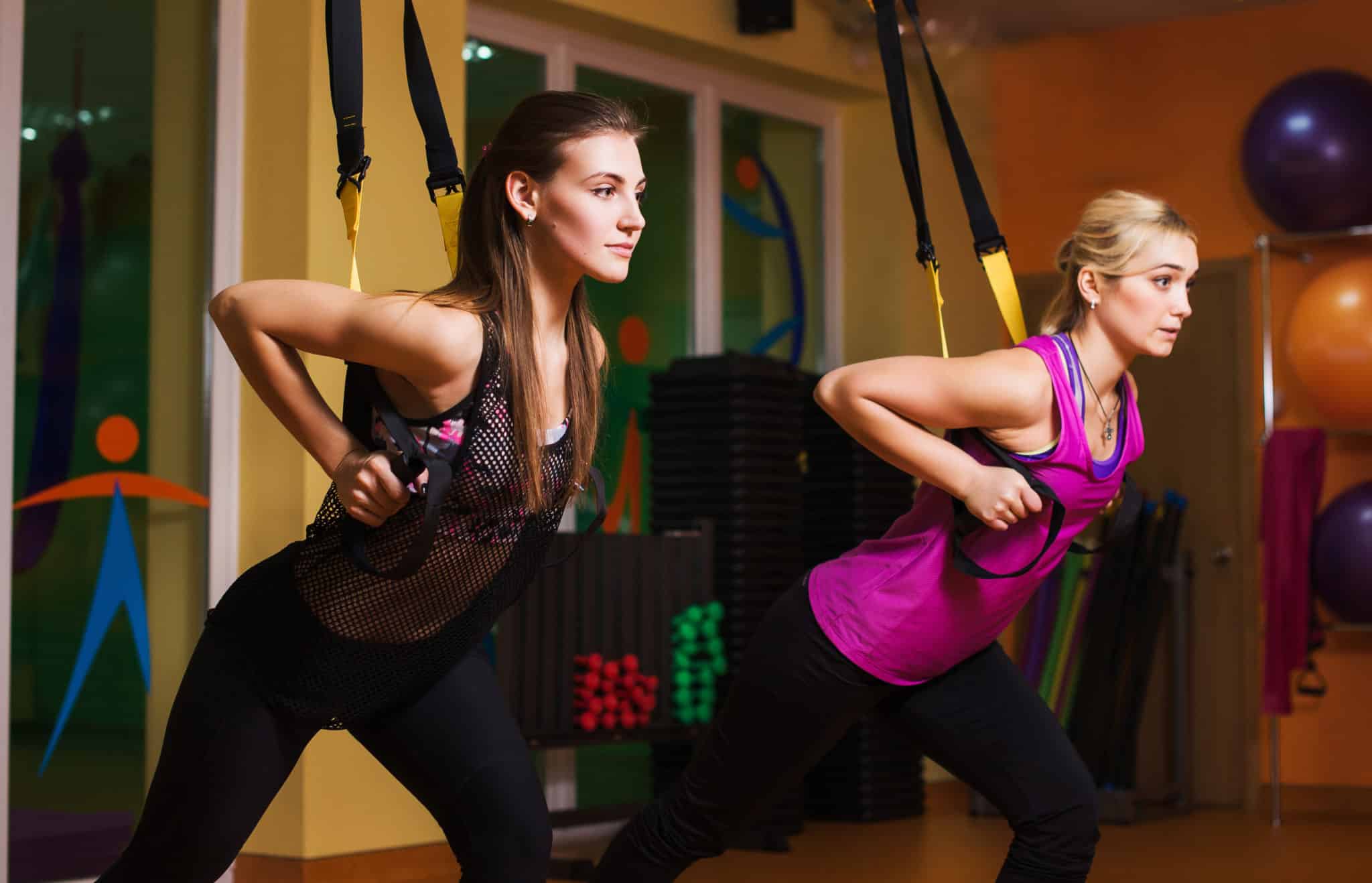

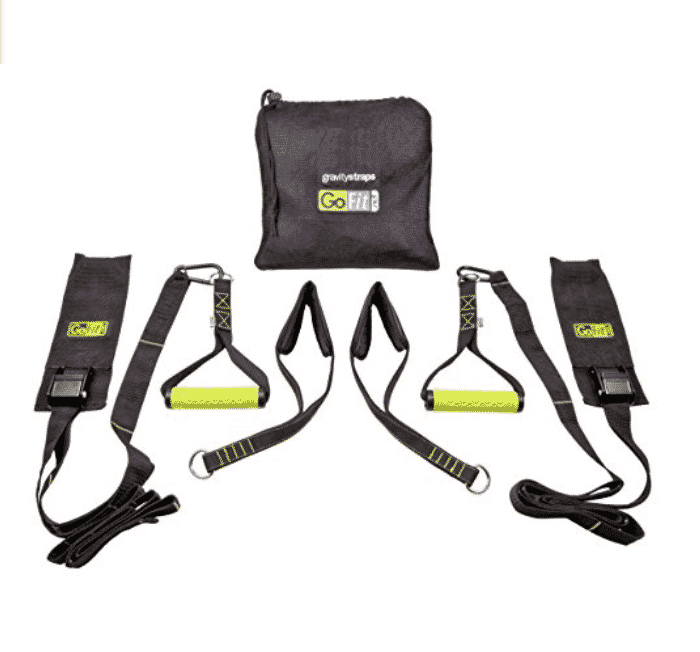
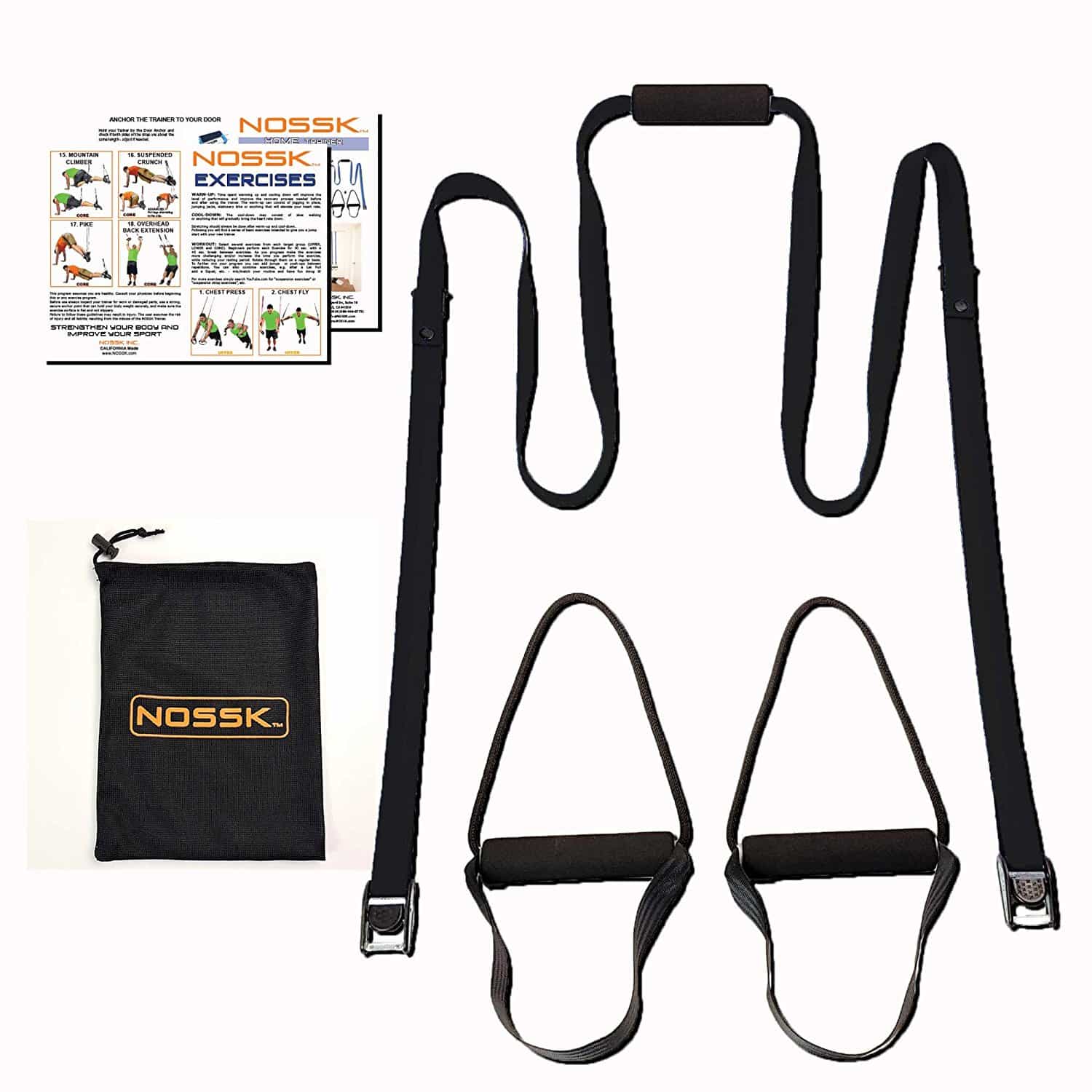
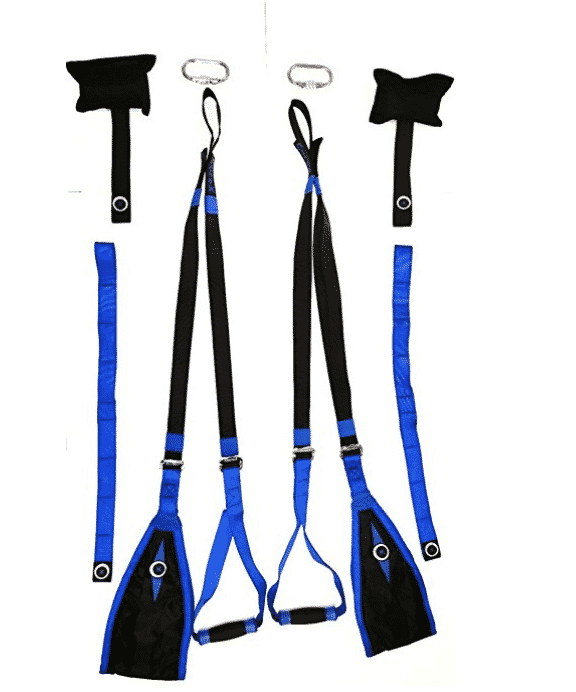


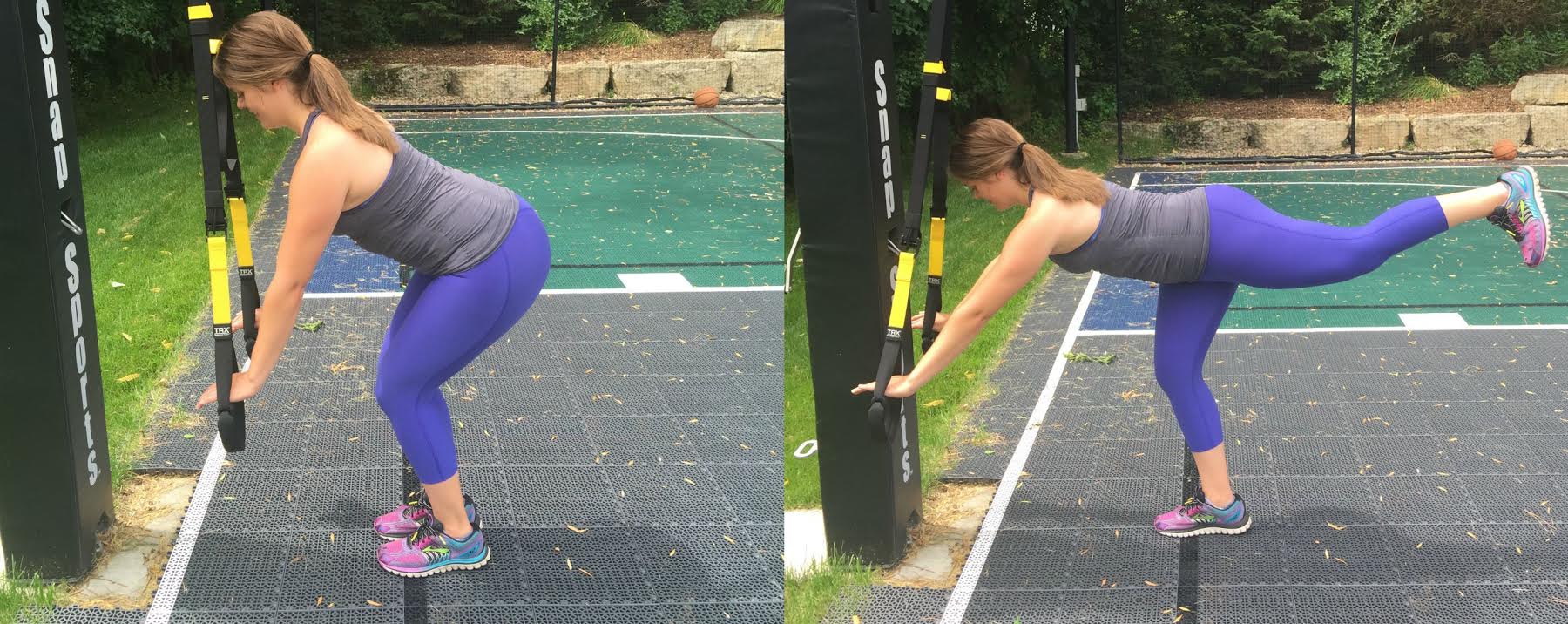
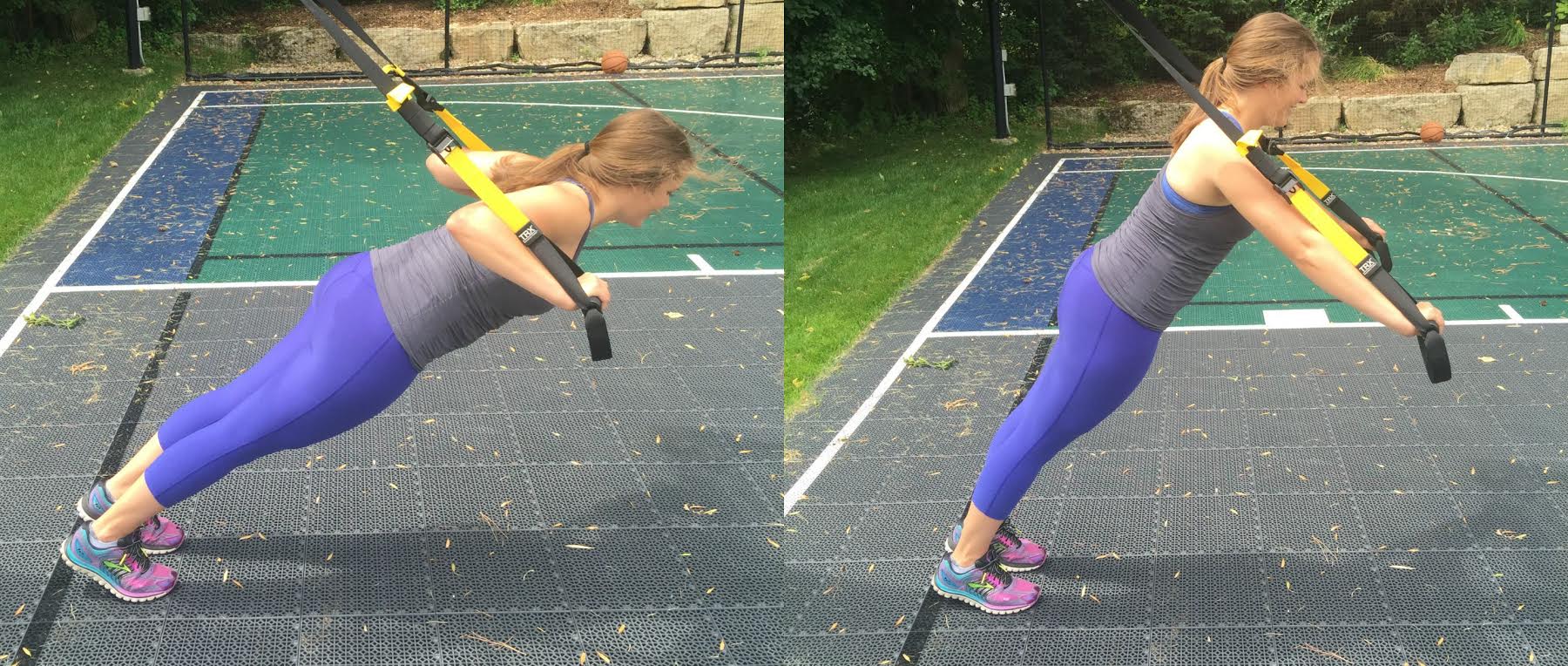


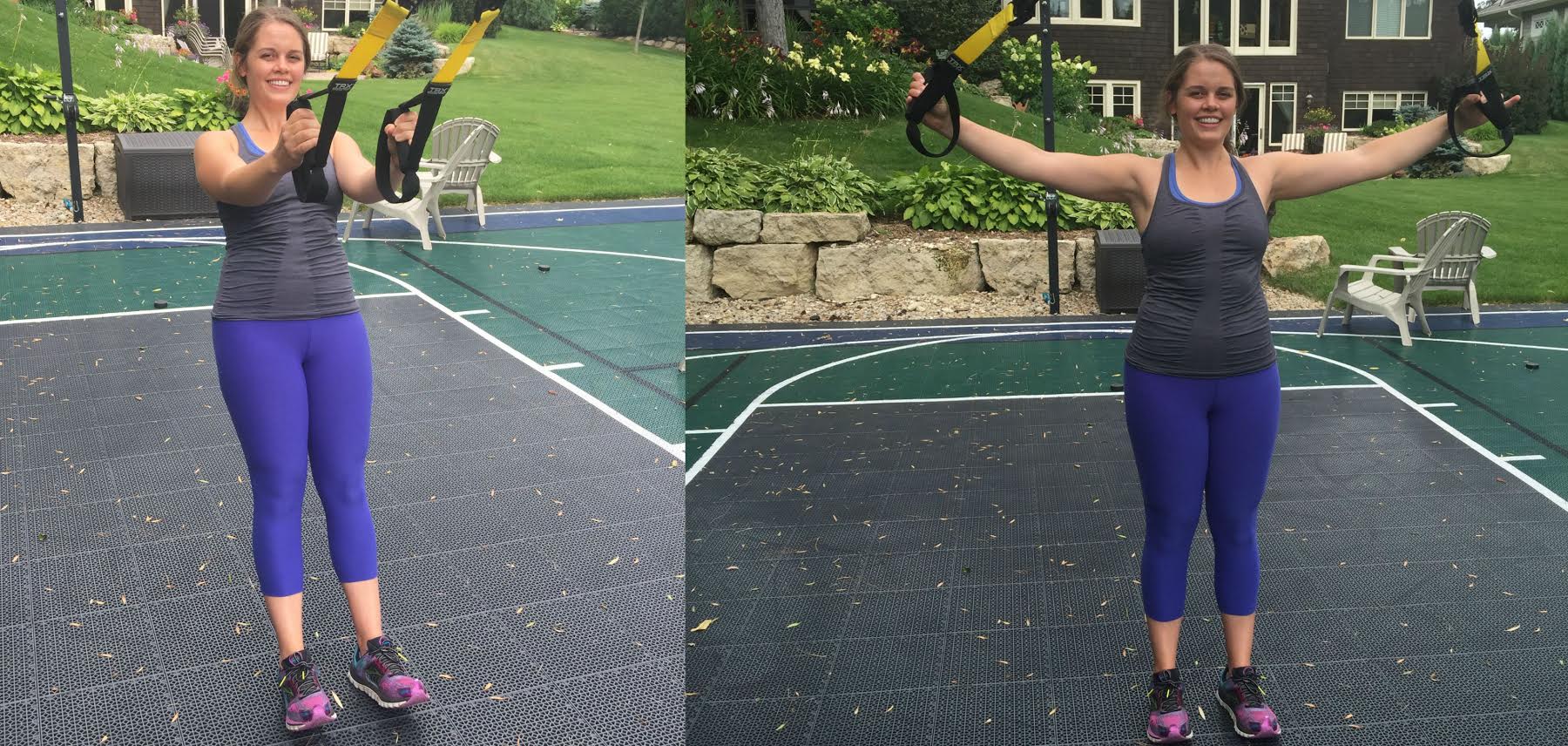
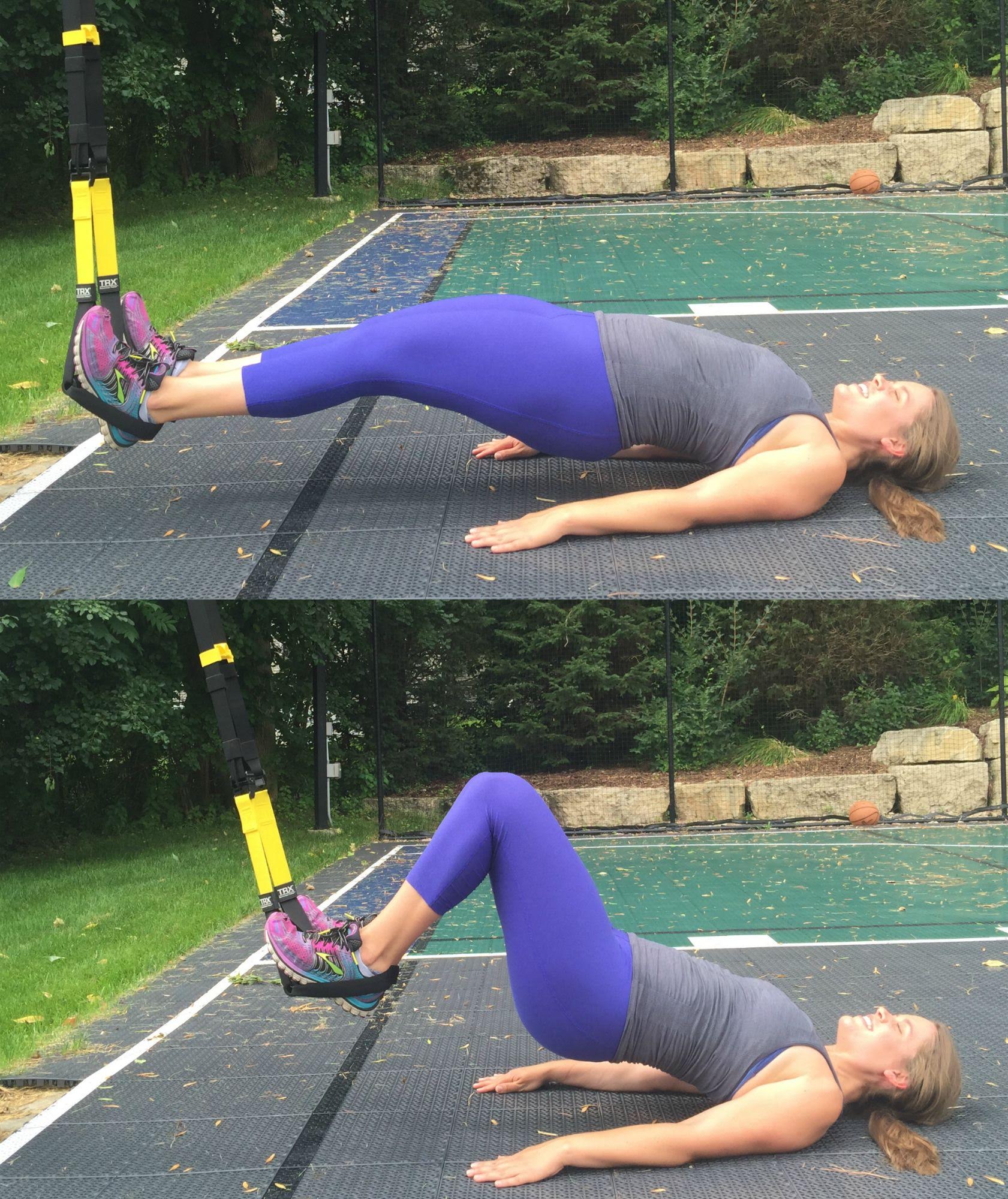
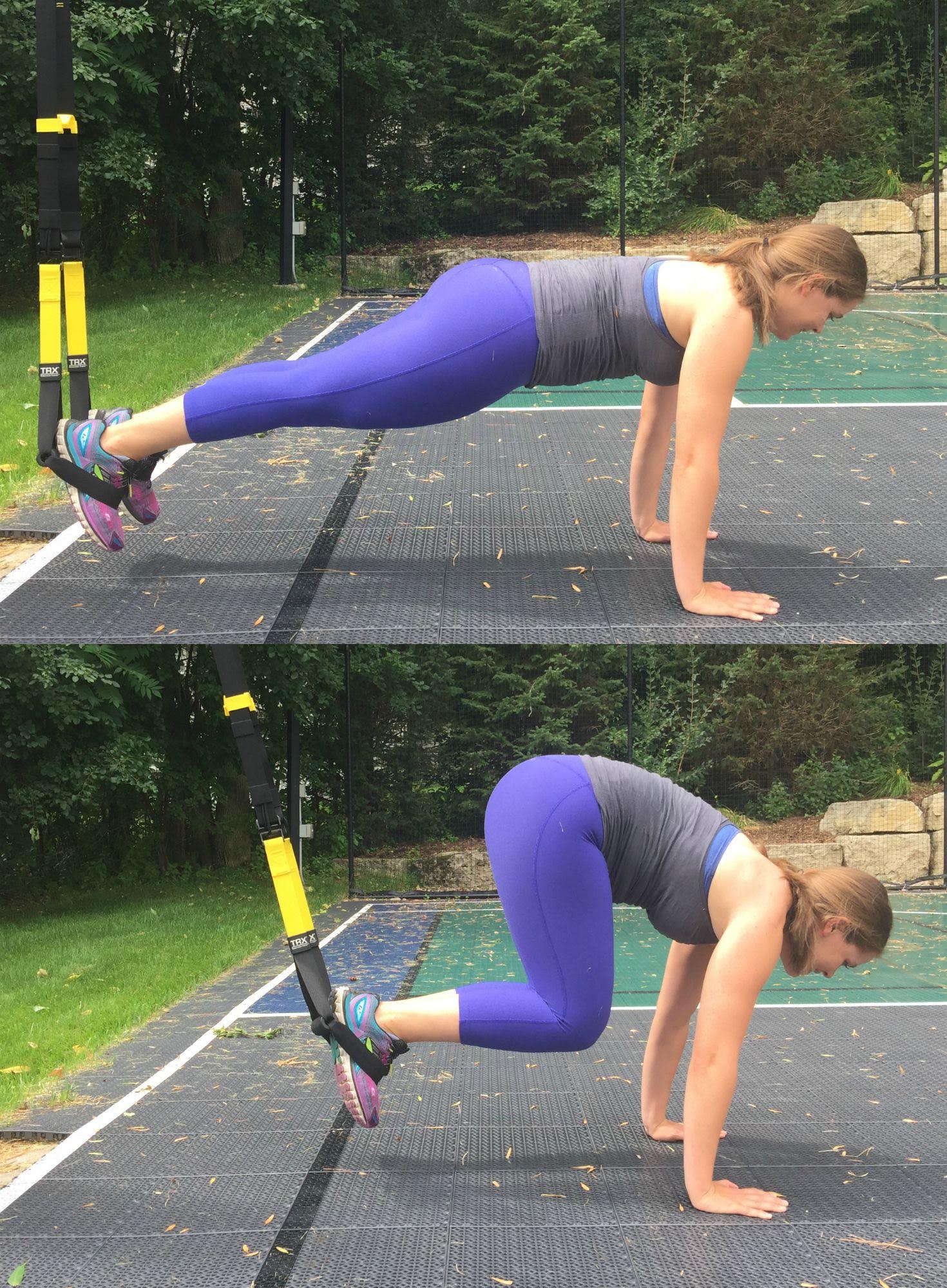
Leave a Reply